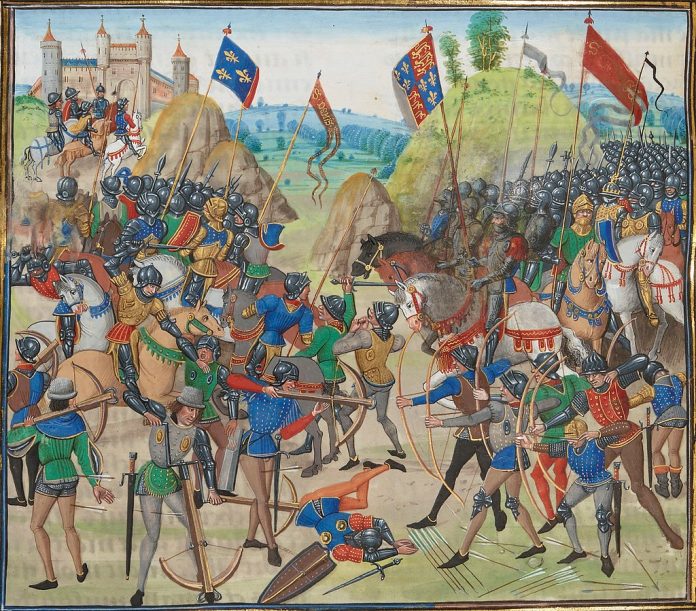The protracted Hundred Years’ War, (if the term protracted is not redundant) which was more like a series of dynastic wars mainly between French and England, lasted more than a decade longer than its name would imply (1337 – 1453). This day marks the anniversary of one of the most significant of battles, both for the war, and for warfare, on the fields of Crecy, in Normandy. The English, under Edward III, invaded across the Channel with a force of 14,000, with most of these (10,000 being ‘longbowmen), while the French counter-attacked with a roughly equal force of 12,000, armored mounted knights, along with crossbowmen.
The bloody battle was almost entirely one-sided: The French had gone in expecting mediaeval close combat, for which the war horses, knights and crossbows were ideal. But they were slaughtered by the English longbows, who would shoot thousands of arrows high into the air, in a parabolic arch, with much longer range (about 400 yards, three times the length of a soccer pitch) than the crossbows, and these heavy arrows would rain down on the French like hellfire, piercing through their armour, and their bodies.
It was an early form of the now-ubiquitous various forms of indiscriminate death-from-a-distance, the prelude to total war, and annihilating the enemy. The longbow became the musket, the rifle, cannon, the artillery gun, and now the missile, launched from thousands of miles away, whether conventional, or, alas, nuclear.
One could argue there is something gained in this, at least in a technological sense, but there is also something deeply lost, morally speaking. At least in close combat – say, with swords – one knew whom one was attacking, and why. For all war must in the end be defensive war, the protection of kith and kin, of what one holds closest and dearest, that an enemy is intent on destroying. If fighting there must be, let us look our enemy in the face, indeed in the very eye, so he knows what we do, and why we do it. Just so, we might fight like men, and let God decide.











